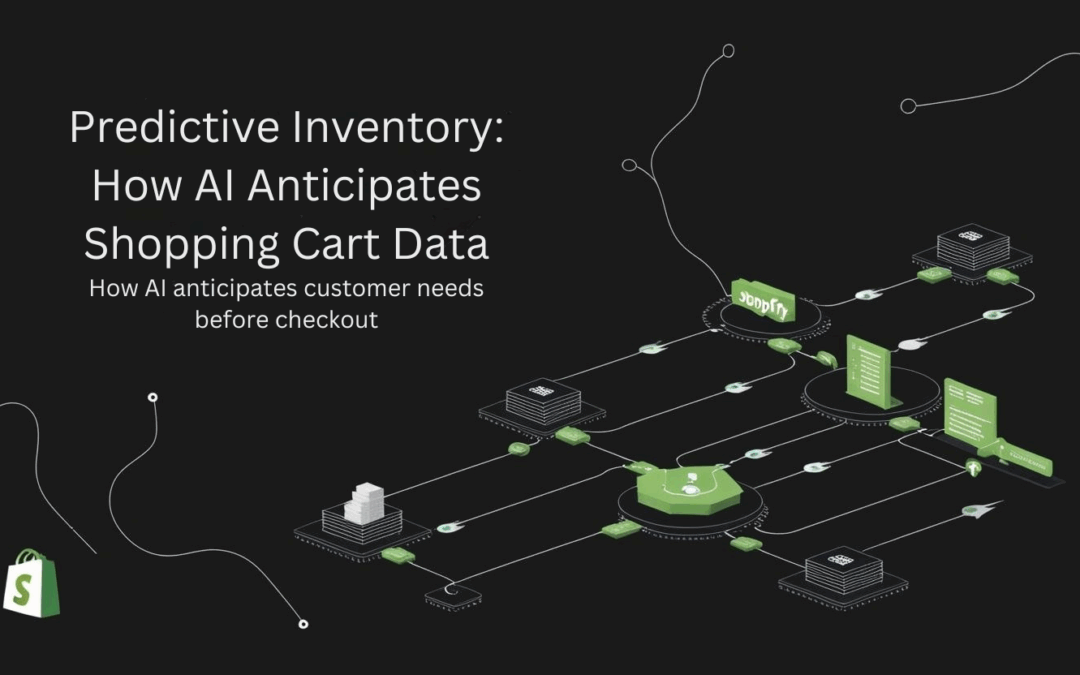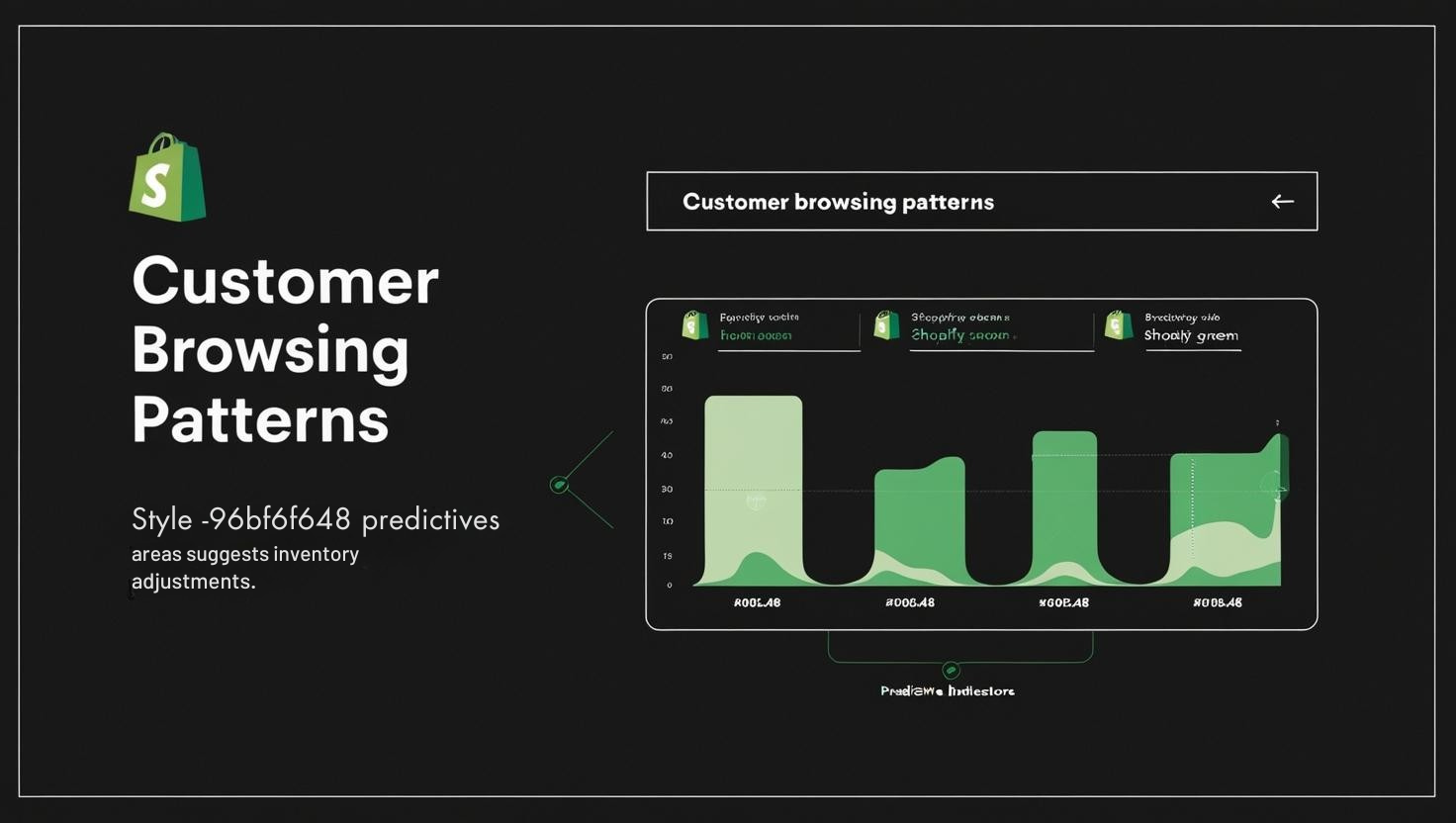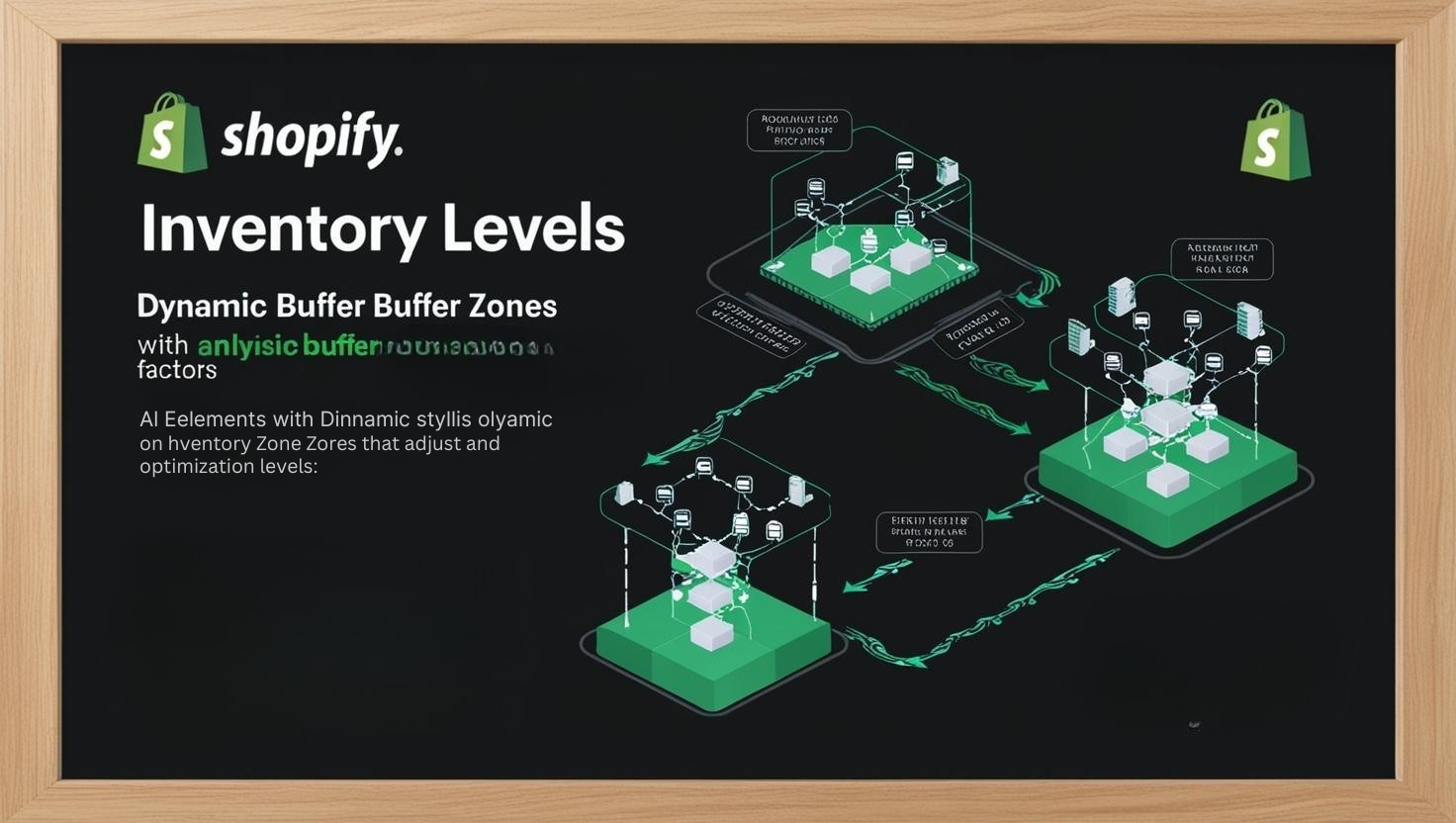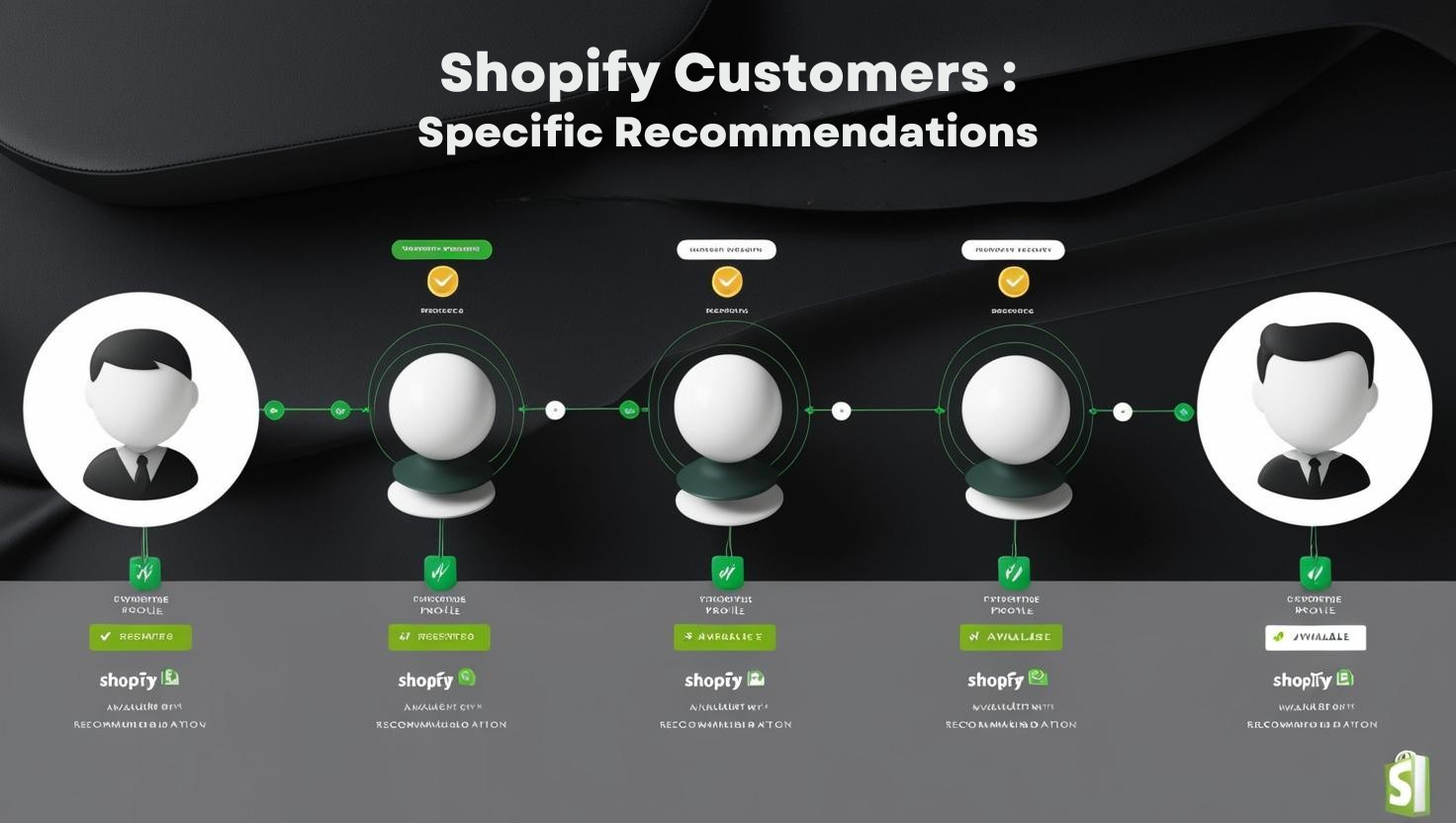Read More
Step-by-Step on SellerADvantage.co.uk
Read on LinkedIn
Read on Medium
Watch on YouTube
Predictive Inventory: How AI Anticipates Customer Needs Before Checkout
Introduction
The e-commerce landscape has evolved dramatically over the past decade, with customer expectations reaching unprecedented heights. Today’s online shoppers demand not just convenience and competitive pricing, but a shopping experience that feels intuitive and personalized to their specific needs. For Shopify store owners, meeting these expectations requires looking beyond traditional reactive inventory management approaches toward more sophisticated predictive systems. AI-powered predictive inventory represents the cutting edge of this evolution, leveraging advanced algorithms to anticipate customer needs before they even reach the checkout page. This proactive approach transforms inventory management from a backend operational concern into a powerful sales tool that can significantly enhance customer satisfaction, increase conversion rates, and boost overall revenue.
The business impact of predictive inventory systems is substantial and measurable. Studies consistently show that stockouts result in immediate lost sales of 4-8% of revenue for e-commerce businesses, with additional long-term losses from diminished customer loyalty. More concerning, approximately 70% of shoppers will switch to a competitor rather than wait for an out-of-stock item to become available. Conversely, businesses implementing advanced predictive inventory systems report average revenue increases of 5-10% within the first six months, along with 15-25% reductions in excess inventory costs and carrying charges. Beyond these direct financial benefits, merchants utilizing predictive inventory technologies experience significant improvements in customer lifetime value metrics, with repeat purchase rates increasing by 20-35% compared to stores using traditional inventory approaches. These statistics underscore a fundamental truth: inventory intelligence directly impacts not just operational efficiency but the entire customer experience and long-term business viability.
What makes today’s AI-powered predictive inventory systems truly revolutionary is their ability to process and interpret vast arrays of data signals that would overwhelm human analysis. Modern systems incorporate not just historical sales data, but real-time signals including website browsing patterns, abandoned cart metrics, social media sentiment, seasonal trends, and even external factors like weather forecasts or economic indicators that might influence purchasing behavior. This multidimensional approach allows for unprecedented forecasting accuracy, often predicting demand shifts 2-3 weeks before they would become apparent in traditional systems. Furthermore, machine learning components enable these systems to continuously improve over time, adapting to evolving customer preferences and market conditions without requiring manual recalibration. For Shopify store owners, this technological maturity means that sophisticated inventory intelligence previously available only to enterprise-level retailers is now accessible through purpose-built applications and integrations, creating opportunities for businesses of all sizes to compete on a more level playing field.
Key Action Points
1. Implement Behavioral Intent Analysis for Pre-Checkout Signals
The foundation of effective predictive inventory management lies in capturing and interpreting pre-checkout customer behaviors that signal purchase intent. Traditional inventory systems focus almost exclusively on completed transaction data, missing the valuable signals contained in browsing patterns, product page interactions, and cart abandonment behaviors. Advanced AI systems can identify specific behavioral sequences that correlate strongly with purchase intent, such as repeated visits to product pages, time spent reviewing specifications, image zooming patterns, and specific pathing through your store. These pre-checkout signals allow your system to anticipate likely purchases hours or even days before customers complete transactions, providing critical lead time for inventory adjustments and helping prevent the frustration of checkout-stage stockouts.
Implementation begins with deploying comprehensive behavioral tracking across your Shopify store. Look for solutions that capture granular interaction data including hover patterns, scroll depth, feature engagement, and time-on-page metrics for individual products. These systems should integrate seamlessly with your inventory management platform, establishing real-time data flows that feed into your predictive models. Next, work with an AI solution that specializes in behavioral pattern recognition, ideally one with specific e-commerce training data that understands the unique signals in online shopping contexts. Configure the system to distinguish between casual browsing and serious buying intent by identifying specific behavioral sequences that historically correlate with purchases in your store. Finally, establish real-time alerting thresholds that trigger inventory actions when significant intent patterns emerge, such as automatically adjusting purchase orders or reallocating inventory when the system detects surging interest in specific products.
The operational impact of behavioral intent analysis extends far beyond basic demand forecasting. Merchants implementing advanced behavioral tracking typically report 40-60% improvements in stockout prediction accuracy compared to historical data models alone. This translates directly to reduced lost sales and enhanced customer satisfaction, as inventory adjustments can be made before demand spikes materialize in completed transactions. Moreover, these behavioral insights create opportunities for proactive customer engagement through targeted availability messaging and priority access programs. For example, when the system detects strong purchase intent patterns for items with limited stock, you can trigger special communications offering priority reservation options or customized restock notifications, transforming potential stockout disappointments into premium customer experiences that strengthen brand loyalty while protecting revenue.
2. Deploy Dynamic Buffer Stock Management Based on Uncertainty Modeling
Traditional buffer stock approaches rely on fixed rules or simple percentages that fail to account for the complex variables impacting inventory needs. Advanced predictive systems use sophisticated uncertainty modeling to implement truly dynamic buffer management that adjusts in real-time based on multiple risk factors. This approach recognizes that different products require different buffer strategies based on their specific demand patterns, supplier reliability, strategic importance, and sensitivity to stockouts. By moving beyond one-size-fits-all buffer rules, you can simultaneously reduce overall inventory costs while improving availability for your most critical products. The key innovation in AI-driven buffer management is its ability to continuously recalculate optimal buffer levels as conditions change, maintaining the perfect balance between cost control and availability assurance.
Implementation starts with product segmentation based on both financial and strategic factors. Configure your AI system to classify products according to their profit contribution, demand volatility, supplier lead time reliability, substitutability, and customer sensitivity to stockouts. This multi-factor segmentation creates a more nuanced understanding of inventory priorities than simple ABC classification methods. Next, deploy machine learning algorithms that can analyze historical stockout impacts and identify the true cost of unavailability for different product segments, including both immediate lost sales and longer-term loyalty impacts. Use this data to establish dynamic buffer thresholds that adjust automatically based on real-time risk assessments. The system should increase buffers when uncertainty rises—such as during supply chain disruptions, demand volatility periods, or for products experiencing rapidly changing behavioral signals—and decrease them when conditions stabilize, continually optimizing your working capital allocation.
The financial impact of dynamic buffer management is substantial and multifaceted. Merchants implementing AI-driven buffer optimization typically report 20-30% reductions in overall inventory carrying costs while simultaneously improving product availability metrics. This seemingly contradictory outcome results from more precise allocation of inventory investment, with reduced buffers for stable, predictable products offsetting increased protection for volatile or strategically critical items. Beyond these direct inventory savings, dynamic buffer management significantly improves cash flow predictability by reducing the frequency and severity of unexpected stockout events and associated emergency replenishment costs. For Shopify merchants operating with limited working capital, this approach maximizes the protective power of each inventory dollar while freeing capital for growth investments in other areas of the business.
3. Create Predictive Customer-Specific Recommendations and Reservations
The most sophisticated application of predictive inventory intelligence moves beyond store-level forecasting to create individualized product recommendations and availability assurances for specific customers. This approach leverages AI to analyze individual shopping patterns, purchase history, demographic information, and behavioral signals to predict not just what products will sell, but specifically which customers are likely to purchase them. By combining these customer-level predictions with inventory intelligence, you can create highly personalized product recommendations that are guaranteed to be in stock when the customer decides to purchase. This alignment of personalization and availability creates a uniquely satisfying shopping experience that dramatically improves conversion rates while protecting against the disappointment of recommending products that may become unavailable during the consideration process.
Implementation requires integrating your customer data platform with your predictive inventory system to create a unified intelligence layer. Configure your AI to develop individual customer preference profiles based on purchase history, browsing patterns, demographic information, and similarity matching with customer cohorts. These profiles should feed into a recommendation engine that evaluates both preference alignment and inventory availability when generating suggestions. For high-value customers or those demonstrating strong purchase intent, implement “soft reservation” capabilities that temporarily set aside inventory for specific customers based on behavioral signals, ensuring that recommended items remain available during their consideration period. Additionally, develop proactive communication workflows that notify customers when products matching their specific preference profiles are running low, creating urgency while demonstrating attentiveness to their individual needs.
The conversion impact of predictive customer-specific recommendations is dramatic, particularly for higher-consideration purchases. Merchants implementing these systems typically report 45-65% higher conversion rates on personalized recommendations compared to standard product suggestions. This performance improvement stems from the powerful combination of relevance and guaranteed availability, addressing two primary factors that influence purchase decisions. Additionally, the approach creates opportunities for premium experience offerings such as VIP product reservations or early access programs based on predictive interest matching. These capabilities transform inventory intelligence from a behind-the-scenes operational function into a visible customer experience differentiator that builds loyalty while protecting revenue. For Shopify merchants competing in crowded market segments, this level of personalized inventory intelligence creates a sustainable competitive advantage that is difficult for competitors to replicate without similar technological capabilities.
Final Thoughts
The implementation of AI-powered predictive inventory represents more than an operational upgrade—it constitutes a fundamental reimagining of the relationship between inventory management and customer experience. By shifting from reactive to predictive approaches, Shopify merchants can transform inventory from a backend concern into a proactive sales tool that directly enhances customer satisfaction and drives revenue growth. This transformation is particularly valuable in today’s highly competitive e-commerce landscape, where consumers have nearly unlimited options and increasingly little patience for basic service failures like stockouts or extended waits. The ability to silently and seamlessly ensure product availability for the right customers at precisely the right moments creates a shopping experience that feels magically intuitive, building the kind of emotional connection with customers that transcends transactional relationships and fosters long-term loyalty.
Looking ahead, predictive inventory capabilities will increasingly intersect with other emerging technologies to create even more sophisticated shopping experiences. Integration with augmented reality could allow customers to visualize and customize products with real-time availability feedback based on their specific configuration choices. Advanced voice commerce systems could incorporate inventory intelligence to subtly guide conversations toward available alternatives when requested items have limited stock. Blockchain-based supply chain tracking could feed real-time materials and component data into prediction models, further enhancing forecasting accuracy for complex products. These technological convergences will continuously expand the strategic potential of inventory intelligence, creating ongoing opportunities for innovation and differentiation among forward-thinking Shopify merchants.
The time for implementing predictive inventory capabilities is now, while the technology is mature enough to provide real value but still novel enough to create meaningful differentiation. Early adopters have the opportunity to establish themselves as customer experience leaders in their market segments, capturing market share and building customer loyalty before these capabilities become standard expectations. By prioritizing the key action points outlined in this article—implementing behavioral intent analysis, deploying dynamic buffer management, and creating predictive customer-specific recommendations—Shopify store owners can transform inventory management from a cost center into a strategic asset that drives sustainable competitive advantage. In an increasingly crowded e-commerce landscape, this evolution from reactive to predictive inventory intelligence may well be the defining factor that separates thriving businesses from those that merely survive in the coming years.
Any follow helps us out a lot – Thank-You!
If you like this article and want to explore further insights, discuss collaborative opportunities, or simply connect, please feel free to reach out to me on any of the following :
Work With Us
Hire Us on fiverr
Hire Us on upwork
🔴Book a FREE PPC Audit🔴







